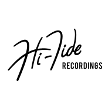nedorama
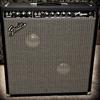
Joined: Oct 10, 2009
Posts: 227
South Bay, CA

|

Posted on Apr 07 2020 10:04 AM
Great video that shows and lets you here the difference between 1, 2, 3, 4 and 5 mics on a drum set.
https://www.youtube.com/watch?v=GPPhmyBIi6k
I think from my ears that studios were also a lot more live back then - usually linoleum floors or wood, and the only sound proofing was shop pegboard (not sure what was behind it). So the room sound is a big part of the equation; I'd try to make the room as live as possible, and experiment with how much resonance you have on the snare - kind of the opposite of the wallet on the snare trick to fatten it up...
If you need, I have my 67 Lemans center speaker hooked up to an 1/8" jack to play music from an iPod - makes for a great auditioning environment because between the limited bandwidth mono 4x10 dash speakers and AM radio, you realize how important getting the mids right is.
Other tip - play bass up an octave with generally little to no low E string, as that would have been too strong a waveform for the record needle - hence why bass playing is up an octave compared to more modern music.
—
'65 Fender Tremolux, '74 Princeton; 77 Vibrolux Reverb; '81 Princeton Reverb
'65-66 Hilgen Basso Grande
Dr. Z MAZ 18 Jr. + 1x12 Cab
Various Telecasters and noise-making pedals
Farfisa Compact Duo
|
MartinB
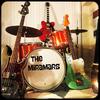
Joined: Feb 06, 2018
Posts: 61
Birmingham



|

Posted on Apr 07 2020 12:37 PM
nedorama wrote:
Other tip - play bass up an octave with generally little to no low E string, as that would have been too strong a waveform for the record needle - hence why bass playing is up an octave compared to more modern music.
Spot on! It's noticeable how infrequently bassists ventured below a low A on the classics.
As I understand it, the speaker cabinets used for bass amplification of the time had limited low-frequency response too - though that may have been more of a concern at live volumes than in the studio.
— The Miramars (2017-2022) https://www.facebook.com/themiramars / https://soundcloud.com/themiramars
|
nedorama

Joined: Oct 10, 2009
Posts: 227
South Bay, CA

|

Posted on Apr 07 2020 03:43 PM
MartinB wrote:
nedorama wrote:
Other tip - play bass up an octave with generally little to no low E string, as that would have been too strong a waveform for the record needle - hence why bass playing is up an octave compared to more modern music.
Spot on! It's noticeable how infrequently bassists ventured below a low A on the classics.
As I understand it, the speaker cabinets used for bass amplification of the time had limited low-frequency response too - though that may have been more of a concern at live volumes than in the studio.
Even on Motown records where they were recording direct without an amp and tape could capture the full spectrum of the bass, they still played up an octave knowing the final result. Also, if you haven't listened to a dash-mounted 4x10 60's Delco speaker in a while, you'll realize you'd never hear any of those notes below an open A, which is 55 Hz. I didn't realize how much mids were critical until I bought my 67 Lemans 14 years ago...
—
'65 Fender Tremolux, '74 Princeton; 77 Vibrolux Reverb; '81 Princeton Reverb
'65-66 Hilgen Basso Grande
Dr. Z MAZ 18 Jr. + 1x12 Cab
Various Telecasters and noise-making pedals
Farfisa Compact Duo
|
websurfer

Joined: May 14, 2007
Posts: 1753



|

Posted on Apr 07 2020 04:03 PM
I thought of Motown when I read your above post. I figure it didn't apply to your point since you were talking about bass amplification of the time, and James Jamerson (Motown studio bassist) recorded direct to the board. However having played severaltranscriptions of some of his classic recordings (as published the book "Standing In The Shadows Of Motown), he played mostly in the lower registers (fifth fret and below) and made much use of open strings and the low E.
|
MartinB

Joined: Feb 06, 2018
Posts: 61
Birmingham



|

Posted on Apr 07 2020 05:33 PM
Yeah, I'm definitely not trying to make any claims about early 60s bass playing or recording in general - only what I've noticed when covering some of the surf hits.
— The Miramars (2017-2022) https://www.facebook.com/themiramars / https://soundcloud.com/themiramars
|
djangodeadman

Joined: Jan 25, 2007
Posts: 1568
Brighton UK




|

Posted on Apr 08 2020 01:56 AM
nedorama wrote:
I think from my ears that studios were also a lot more live back then - usually linoleum floors or wood, and the only sound proofing was shop pegboard (not sure what was behind it). So the room sound is a big part of the equation; I'd try to make the room as live as possible, and experiment with how much resonance you have on the snare - kind of the opposite of the wallet on the snare trick to fatten it up...
Depending on the studio, it’s probably true that the rooms sounded fairly live; that’s why they’re called “live” rooms, after all. What look to us like sheets of pegboard are almost certainly Helmholtz resonators, though. These are tuned traps, designed to tame certain frequencies in the room, rather than sound proofing.
A band like The Astronauts, for example, would have recorded in large, well equipped and designed studios and it’s a mistake to assume that these studios were primitive. Not the case for the studios where all bands were able to record, obviously.
Making your own recording space as live as possible may well produce good and authentic sounding results, but without appropriate acoustic treatment, it may well have a negative impact, depending on what the room sounds like.
— Los Fantasticos
|
djangodeadman

Joined: Jan 25, 2007
Posts: 1568
Brighton UK




|

Posted on Apr 08 2020 01:58 AM
*MartinB wrote
As I understand it, the speaker cabinets used for bass amplification of the time had limited low-frequency response too - though that may have been more of a concern at live volumes than in the studio.
What amps and speaker cabinets were being used by the first wave bass players?
— Los Fantasticos
|
MartinB

Joined: Feb 06, 2018
Posts: 61
Birmingham



|

Posted on Apr 08 2020 06:10 AM
djangodeadman wrote:
What amps and speaker cabinets were being used by the first wave bass players?
For recording? I'd love to know! It may not have been the same gear that you see in live & promo photos.
— The Miramars (2017-2022) https://www.facebook.com/themiramars / https://soundcloud.com/themiramars
|
simoncoil
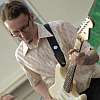
Joined: Sep 28, 2012
Posts: 922
Berlin, Germany





|

Posted on Apr 08 2020 07:17 AM
As an addition to what I posted before, here is Randy Nauert, bass player of the Challengers, during the sessions for their first album "Surf Beat" at World Pacific Studios. His comment on the picture was: "I loved my new Fender Bassman amp. [...] I was saving up for a Fender Precision Bass. This one, a Pearl, I bought mowing lawns, wasching cars and taking out the trash. [...] I bought the Bassman amp with one dollar bills that we made throwing dances at the Hermosa Biltmore Hotel [...]"

(Reading stuff like this, really makes me wish Randy had written a book about his time in the music business. Or at least post his stuff at a more accessible page than Facebook...)
On the other hand this picture of a Beach Boys session shows multiple instruments plugged in the same amp; probably the guitar and the bass into a Bandmaster.

So there were probably lots of different scenarios...
— Los Apollos - cinematic surf music trio (Berlin)
"Postcards from the Scrapyard" Vol. 1, 2 & 3 NOW available on various platforms!
"Chaos at the Lobster Lounge" available as LP and download on Surf Cookie Records!
|
mike_fried
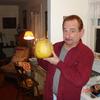
Joined: Aug 02, 2012
Posts: 162
Nashville, TN


|

Posted on Apr 10 2020 10:23 PM
An often overlooked but very important subject is the use of ribbon mics in those early recordings, especially in the '50s into the mid '60s. A lot has been said about their "warm" sound, but a more important factor in their use was the dramatic side rejection and proximity effect due to their figure-8 polar pattern. Engineers of the day were well-schooled in setting up the session to take maximum advantage of those properties. The use of a minimum number of mics (figure-8's can serve "double duty") reduces the phase issues that can be introduced with every new live mic in the room. The downside can be that you really need a decent (or better) room, and a lot of trial-and-error with mic placement if you're new to the process.
Last edited: Apr 10, 2020 22:27:07
|
simoncoil

Joined: Sep 28, 2012
Posts: 922
Berlin, Germany





|

Posted on Dec 30 2021 03:18 AM
I found some information about the gear in studio of Downey Music/Wenzel's Music Town unearthed by Steve Hoffman during his work on "Surf Legends (and Rumours)", which may be of interest. It's near the bottom of the first page in this forum thread:
https://forums.stevehoffman.tv/threads/early-60s-studio-guitar-recording-information-needed-how-to-recreate-that-sound-today.963695/
— Los Apollos - cinematic surf music trio (Berlin)
"Postcards from the Scrapyard" Vol. 1, 2 & 3 NOW available on various platforms!
"Chaos at the Lobster Lounge" available as LP and download on Surf Cookie Records!
|
ElectricLimnology
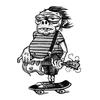
Joined: Nov 20, 2017
Posts: 112
Southeast MIchigan


|

Posted on Jan 01 2022 07:17 PM
My theory on the vintage mix sound comes down to this: Even if you can setup a vintage accurate signal chain starting with old fashioned sources in a good room it is very difficult to get that mushy hot old sound unless you are tracking to tape and smashing it. The nature of recording on DAW is so much more controlled that after you hit stop you’re working with a very different type of recording.
I have wanted to say this for some time: The Miramars have done a great job of creating vintage style recordings with cassette four track and the smallest selection of common microphones. Even if one isn’t necessarily attempting to recreate 1961 sounds these recordings are a great example of working smart and turning limitations into creative assets. Please make more!
DRUM RECORDING TIP: This is not really a vintage sound but may be of help to some one here. There is a lot of talk about the Glyn Johns drum mic method. It’s a simple effective way to record drums but in my experience it depends too much on the room for many home recording scenarios. Especially if you are tracking live with little to no isolation. I have had luck with another approach I picked up from a recording engineer friend. It does unfortunately require more microphones but they do not all need to be fancy. Mic the kick, snare, and place one overhead where it picks up the cymbals nicely, maybe above and behind. Depends on your situation but do try to position it close to equal distance from the snare and the kick beater. Then close mic the toms (if you have more than one ride tom and a floor tom this unfortunately not the music forum for you). Mix the snare, kick and over head more or less center then hard pan the toms (I usually slightly pan the snare for a little more space but not much). If your DAW doesn’t have enough inputs to accommodate this during live tracking you can route through a mixer. Compress to taste during mix. Generally I smash the toms even if the faders are relatively low. EQ the overheads with cymbals in mind but room sound and instrument bleed usually are included for a natural sound. Some of this may be obvious to some of you but it came as a bit of a revelation for me as I had been hung up on stereo overheads for a long time. It is similar to the “Recorder Man” method but is less susceptible to the phase issues that result from using two overheads.
My apologies if any of this sounds pretentious and didactic but I love recording!
— The Vicissitones
Diesel Marine
The Rasputones
|
MartinB

Joined: Feb 06, 2018
Posts: 61
Birmingham



|

Posted on Jan 02 2022 05:15 AM
ElectricLimnology wrote:
I have wanted to say this for some time: The Miramars have done a great job of creating vintage style recordings with cassette four track and the smallest selection of common microphones. Even if one isn’t necessarily attempting to recreate 1961 sounds these recordings are a great example of working smart and turning limitations into creative assets. Please make more!
Thanks so much! Between the pandemic and our Tascam needing repair, we've been in limbo for a bit. But who knows what the new year may bring?
— The Miramars (2017-2022) https://www.facebook.com/themiramars / https://soundcloud.com/themiramars
|
Kawentzmann

Joined: Feb 27, 2006
Posts: 1062
Berlin, Germany

|

Posted on Jan 02 2022 11:41 AM
So first you have to decide whether you want a big studio sound like the Astronauts’ or a less hi-fi small studio sound.
To get the mushier low key sound the hint is a passive mixer (early Downey Studio), today we would call it a fader box I guess. So all signal processing and desk clipping is on the sum. Unless you are going to release in mono I would use a mid-side matrix, if possible.
The big studio set-up is not that different from today with at least a channel strip per instrument in the desk. Likely the gear and approach is different, though.
— The Exotic Guitar of Kahuna Kawentzmann
You can get the boy out of the Keynes era, but you can’t get the Keynes era out of the boy.
Last edited: Jan 02, 2022 11:42:10
|
psychonaut

Joined: Dec 08, 2007
Posts: 1303


|

Posted on Jan 04 2022 05:02 PM
I believe its not just down to mixing and recording techniques although they all play a part. There are 3 key ingredients to achieving a vintage sound that get overlooked and aren't really part of the equation in the digital age; Tubes, Transformers, and Tape.
Most of the recording gear used in the 60's was tube based and utilized some pretty hefty transformers. Transformers are responsible for a lot of the 'weight' and dimension in a recording. There were transformers used all over the signal chain. Two of the most common microphones in the 60's for example, the Neumann u47/48 and U67 employed tubes and transformers. The mixing desk would have also used tubes in addition to input and output transformers on every channel and preamp. Whatever outboard gear like compressors and eq also depended on tubes and transformers. Tape machines also used input and output transformers, and up until about 1967 or so were valve based. Of course tape adds quite a bit of it's own pixie dust, but it's not necessarily all about tape compression and distortion though. It's important to keep in mind that professional tape machines are always aligned and set up to record as clearly and with as much fidelity as possible.
I'm not saying you can't get a satisfactory vintage sound with modern gear, but a lot of what is perceived and thought of as a vintage sound is down to the three "T"s - Tubes, Transformers and Tape. IMHO.
— https://www.facebook.com/coffindagger
http://coffindaggers.com/
http://thecoffindaggers.bandcamp.com
|
synchro

Joined: Feb 02, 2008
Posts: 4523
Not One-Sawn, but Two-Sawn . . . AZ.





|

Posted on Jan 07 2022 09:25 AM
psychonaut wrote:
I believe its not just down to mixing and recording techniques although they all play a part. There are 3 key ingredients to achieving a vintage sound that get overlooked and aren't really part of the equation in the digital age; Tubes, Transformers, and Tape.
Most of the recording gear used in the 60's was tube based and utilized some pretty hefty transformers. Transformers are responsible for a lot of the 'weight' and dimension in a recording. There were transformers used all over the signal chain. Two of the most common microphones in the 60's for example, the Neumann u47/48 and U67 employed tubes and transformers. The mixing desk would have also used tubes in addition to input and output transformers on every channel and preamp. Whatever outboard gear like compressors and eq also depended on tubes and transformers. Tape machines also used input and output transformers, and up until about 1967 or so were valve based. Of course tape adds quite a bit of it's own pixie dust, but it's not necessarily all about tape compression and distortion though. It's important to keep in mind that professional tape machines are always aligned and set up to record as clearly and with as much fidelity as possible.
I'm not saying you can't get a satisfactory vintage sound with modern gear, but a lot of what is perceived and thought of as a vintage sound is down to the three "T"s - Tubes, Transformers and Tape. IMHO.
That’s a good point. The iron in the signal path definitely contributes to the sound. Tape brings its own contribution to the mix and, of course, tubes are magic in a bottle.
— The artist formerly known as: Synchro
When Surf Guitar is outlawed only outlaws will play Surf Guitar.
|
Kawentzmann

Joined: Feb 27, 2006
Posts: 1062
Berlin, Germany

|

Posted on Jan 09 2022 07:48 AM
True true and limited resources for vintage gear is no excuse anymore since plugins became so convincing. Today it boils down to what kind of signal is being fed into them. Not saying digital is sounding exactly the same but it might do the trick if done properly.
— The Exotic Guitar of Kahuna Kawentzmann
You can get the boy out of the Keynes era, but you can’t get the Keynes era out of the boy.
|



































